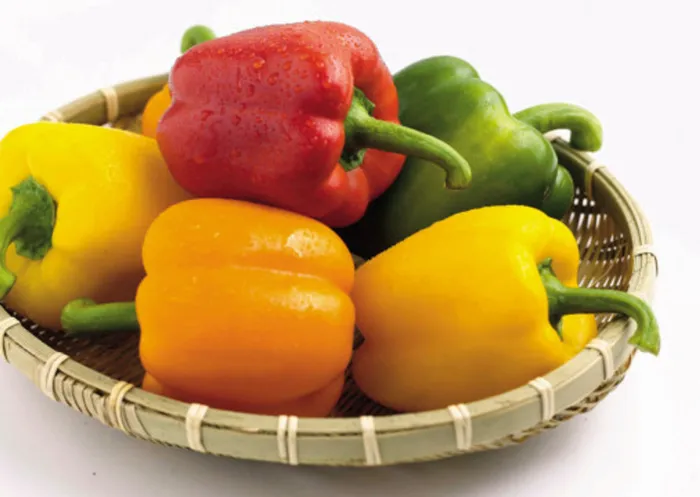Start your own vegetable garden

Vegetarians have a 36% lower rate of metabolic syndrome - a combination of symptoms that lead to long-term diseases. Vegetarians have a 36% lower rate of metabolic syndrome - a combination of symptoms that lead to long-term diseases.
Growing your own vegetables ensures they are fresh, have not been sprayed with chemicals and it allows you to choose what to grow.
It easy to grow vegetables from seed. All you need to ensure is that you sow at the correct time of year, and give the seeds a good start with composted soil, plenty of sunshine and access to water.
It’s all there on the seed packet the time to plant, the depth and spacing. Seed companies want your dream gardens to become real gardens so they place easy-to-follow instructions on the packets.
Choose a place where vegetables will receive five hours of sun a day.
Fence the vegetable garden if you have pets - you can also use the fence to grow climbing peas and beans.
If you live in an area with monkeys, enclose the area with netting-wire.
A metre-width is practical for beds so that there is access from both sides for sowing, weeding and harvesting.
Prepare the ground by forking over the area, removing weeds and stones and breaking up any lumps.
Add half a bag of compost and a handful of a general fertiliser per square metre, rake the surface as evenly as possible, and water well the day before planting.
Root crops and legumes (beans, peas) grow better when seed is sown directly into their permanent position. Planting in single or wide rows makes identifying weeds easier. Mark rows with stretched string, then make a furrow on this line to the correct depth recommended on the seed packet.
Sow seed sparingly, then cover with a thin layer of soil, and press down firmly before watering. It helps to sow fine seed more evenly if a teaspoon of the seed is mixed with a cup of sand or maize meal.
Thin out seedlings to allow those left to develop into strong, healthy plants. To avoid washing away seed, use a watering can with a fine rose.
Protect seeds by covering with bird-proof netting, and keep soil moist but not wet.
It makes sense to sow seed at intervals, rather than have too many vegetables maturing at the same time.
Save ground space by growing climbing vegetables such as cucumbers, courgettes (baby marrows) and runner beans vertically on wigwams and trellis.
Mulch between rows to conserve water and reduce weeds.
On hot days, prevent vegetables from wilting by watering early in the morning, and if necessary, again in the late afternoon.
* For more information see www.lifeisagarden.co.za
Plant this month…
Beetroot, broccoli, carrots, celery, brinjal (frost-free areas), lettuce (choose heat tolerant varieties), peppers (frost-free areas), spinach, Swiss chard, a first sowing of peas, and in cold gardens a final sowing of beans.
Extend the season for harvesting cabbage and cauliflower by growing varieties that mature at different times.
Design by colour
In frost-free and coastal gardens there is still time to plant colourful and tasty red and yellow tomatoes, as well as sweet peppers in red, yellow and green.
Lettuce with leaves that are frilly or plain, and green, rose or deep red in colour are a winner in all areas throughout the year.
Swiss chard has a milder flavour than spinach; “Ruby” has red stems and “Bright Lights” has coloured stems of yellow, apricot, pink and red that are so decorative that they are often grown in the flower garden.
Make vegetable gardening more interesting by growing Asian greens. Their delicate and spicy flavours and interesting textures are becoming increasingly popular in modern cuisine. Among the most popular are pak choi (bok choi), Chinese kale, Chinese cabbage, daikon (Japanese radish) and Chinese mustard. - Daily News